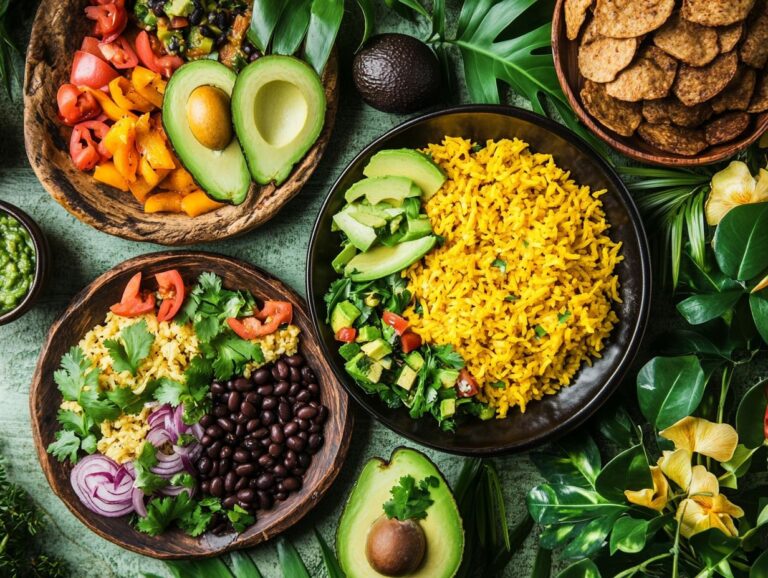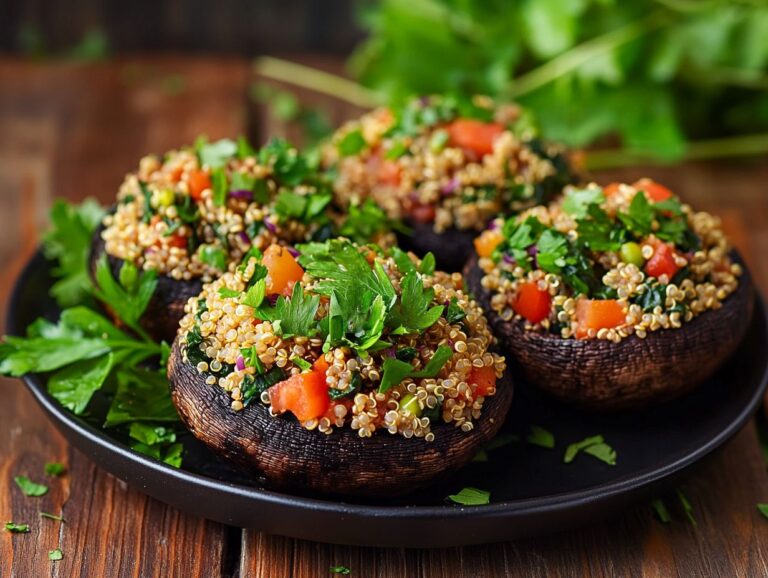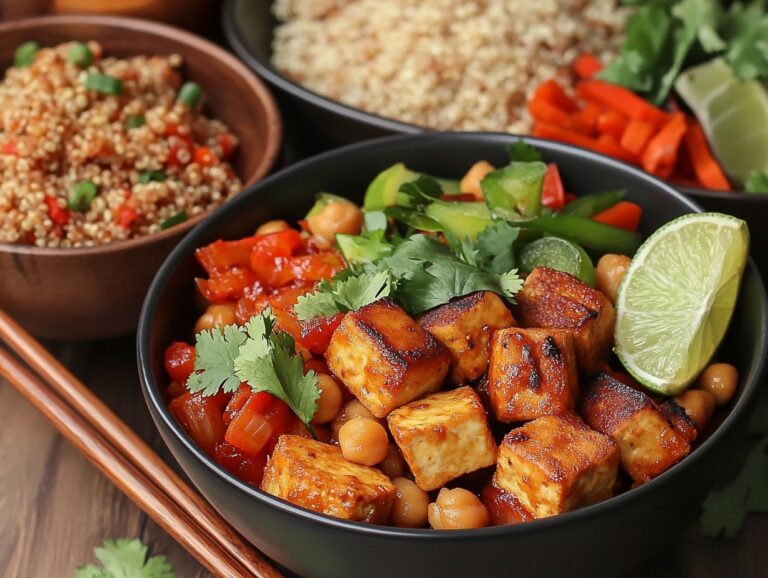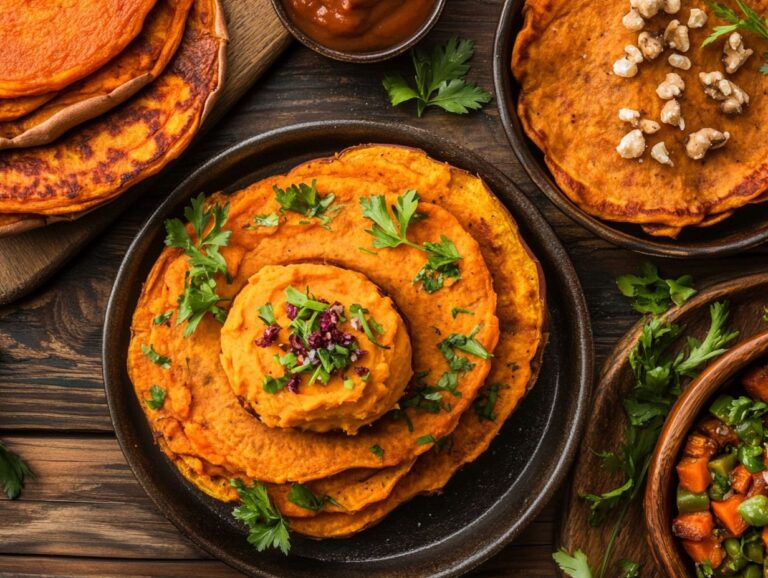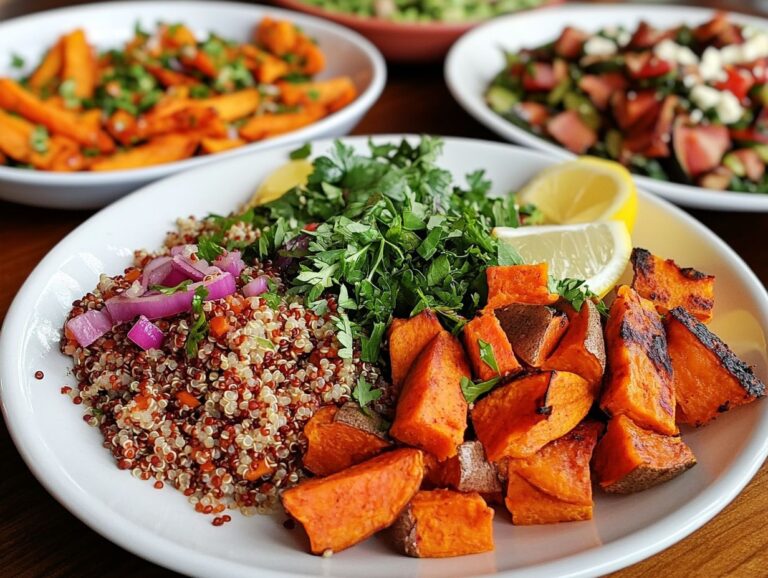Argentinian cuisine is renowned for its rich flavors and hearty dishes, but how can these traditional favorites be enjoyed in a plant-based way? From the tangy allure of chimichurri to the savory delight of empanadas, let’s explore the vegan adaptations. This exploration delves into the vibrant world of Argentinian food while embracing a vegan lifestyle. From the health and environmental benefits of a plant-based diet to clever ingredient substitutions, you will discover how to adapt classic recipes such as empanadas, milanesas, locro, and dulce de leche into delicious vegan versions. Join us in transforming beloved Argentinian dishes into mindful, animal-friendly meals that everyone can enjoy!
Overview of Traditional Argentinian Dishes
 Traditional Argentinian dishes are as diverse and rich as the country’s culinary heritage, featuring the use of local ingredients, flavorful herbs, and traditional cooking techniques. One of the most famous dishes is empanadas, which are pastries filled with spiced ingredients such as seasoned vegetables or meats. These empanadas can be adapted to vegan versions using plant-based fillings like tofu or chickpeas. Additionally, chimichurri, a popular sauce made with fresh parsley, garlic, olive oil, and red wine, exemplifies the harmonious blend of local ingredients and culinary traditions found in Argentinian cuisine. This sauce can be enhanced further with the addition of seasonal herbs like mint or a fresh lime twist for an extra burst of flavor. The Argentinian asado, a barbecue style, emphasizes the communal aspect of dining, bringing families together to enjoy hearty meals. This overview explores traditional Argentinian dishes, highlighting their unique characteristics and significance within the country’s food culture, and looks into how these dishes can be adapted into vegan versions while preserving their rich taste. Among the many regional specialties, locro stands out as a hearty stew often made with hominy, various meats, and seasonal vegetables. Vegan adaptations of locro can be equally satisfying by using vegetables like sweet potato and protein-rich ingredients such as quinoa and black beans. This dish reflects both native and European influences and is typically served during national celebrations, often accompanied by a refreshing salad and a side of chimichurri sauce. Another notable dish is humitas, a sweet preparation made from ground corn and cheese, traditionally wrapped in corn husks and steamed. A vegan version of this dish can be crafted using coconut cream and almond milk for the filling. This dish showcases Argentina’s rich agricultural produce. Each of these dishes not only utilizes fresh local ingredients, but also embodies Argentina’s diverse cultural heritage, linking generations through traditional preparation methods and the communal sharing of meals, often enjoyed during an asado, Argentina’s famous barbecue style. As these recipes are passed down through generations, they become an integral part of Argentine identity.
Traditional Argentinian dishes are as diverse and rich as the country’s culinary heritage, featuring the use of local ingredients, flavorful herbs, and traditional cooking techniques. One of the most famous dishes is empanadas, which are pastries filled with spiced ingredients such as seasoned vegetables or meats. These empanadas can be adapted to vegan versions using plant-based fillings like tofu or chickpeas. Additionally, chimichurri, a popular sauce made with fresh parsley, garlic, olive oil, and red wine, exemplifies the harmonious blend of local ingredients and culinary traditions found in Argentinian cuisine. This sauce can be enhanced further with the addition of seasonal herbs like mint or a fresh lime twist for an extra burst of flavor. The Argentinian asado, a barbecue style, emphasizes the communal aspect of dining, bringing families together to enjoy hearty meals. This overview explores traditional Argentinian dishes, highlighting their unique characteristics and significance within the country’s food culture, and looks into how these dishes can be adapted into vegan versions while preserving their rich taste. Among the many regional specialties, locro stands out as a hearty stew often made with hominy, various meats, and seasonal vegetables. Vegan adaptations of locro can be equally satisfying by using vegetables like sweet potato and protein-rich ingredients such as quinoa and black beans. This dish reflects both native and European influences and is typically served during national celebrations, often accompanied by a refreshing salad and a side of chimichurri sauce. Another notable dish is humitas, a sweet preparation made from ground corn and cheese, traditionally wrapped in corn husks and steamed. A vegan version of this dish can be crafted using coconut cream and almond milk for the filling. This dish showcases Argentina’s rich agricultural produce. Each of these dishes not only utilizes fresh local ingredients, but also embodies Argentina’s diverse cultural heritage, linking generations through traditional preparation methods and the communal sharing of meals, often enjoyed during an asado, Argentina’s famous barbecue style. As these recipes are passed down through generations, they become an integral part of Argentine identity.
Benefits of a Plant-Based Diet
A plant-based diet offers numerous health and environmental benefits that promote improved well-being and sustainability. An increasing number of individuals are embracing vegan and vegetarian diets, which not only enhance personal health but also foster a sense of community among those who share similar values concerning ethical eating habits and sustainable living. Diets rich in vegetables, fruits, and whole grains contribute to better health outcomes and environmental sustainability, making them some of the most desirable options for comfort food and nutritious meals.
Health and Environmental Benefits
A plant-based diet offers numerous health benefits, including effective weight management, improved heart health, and enhanced nutritional intake, all contributing to a longer and healthier life. The environmental advantages are also significant, as such a diet helps reduce greenhouse gas emissions, conserve water, and mitigate land degradation, primarily due to decreased meat consumption. Adopting a plant-based vegan lifestyle, rich in vegetables and legumes, supports both individual health and planetary welfare. Specifically, a plant-based diet can lower cholesterol levels and improve digestion, benefits that are particularly attractive to those pursuing healthier lifestyle choices. Foods like oats, beans, sweet potatoes, and various fruits are known to promote gut health and optimize the digestive process, enabling the body to absorb nutrients more efficiently. Additionally, by relying less on animal agriculture, we encourage biodiversity, allowing natural ecosystems to thrive, and promote sustainable farming practices that benefit both local communities and the global environment. Ultimately, the adoption of this diet fosters a mutually beneficial relationship between personal health and ecological well-being.
Adapting Traditional Recipes to Vegan Versions
Traditional Argentinian recipes can be transformed into vegan versions, preserving the country s flavors while promoting a plant-based lifestyle. By making simple ingredient substitutions and utilizing versatile Argentinian cooking techniques, individuals can enjoy classic dishes such as empanadas and locro in a vegan-friendly way. This adaptation of traditional recipes not only accommodates various dietary preferences but also encourages the exploration of new culinary influences. In doing so, it enhances the richness of traditional Argentinian cuisine with fresh vegetables and spices.
Ingredient Substitutions and Cooking Techniques
Ingredient substitutions are essential for transforming traditional recipes into plant-based versions while preserving the rich flavors and textures of Argentinian cuisine. Common swaps include using high-quality vegetable broth in place of meat stocks and incorporating plant-based proteins such as tofu, chickpeas, or quinoa instead of animal products. For a rich taste, adding herbs like oregano and rosemary can significantly enhance the flavor. These changes make dishes like milanesas and locro accessible to everyone. Mastering specific cooking techniques, such as steaming and grilling, can enhance the flavor profile while staying true to traditional methods. Incorporating ingredients like nutritional yeast can provide the savory umami taste typically found in cheeses, resulting in a delicious creamy sauce for pastas or pizzas. For a traditional empanada filling, lentils or mushrooms can offer a meaty texture without compromising flavor. Adding spices like cumin and paprika can further enhance the savory experience. These ingredient substitutions, combined with slow-cooking techniques to intensify flavors, play a significant role in successfully adapting traditional dishes. Additionally, using coconut cream as a luxurious dessert base or almond milk as a dairy alternative retains the authentic essence of the recipes while being plant-based. These substitutions are particularly effective in creating a vegan dulce de leche for desserts like alfajores. This approach not only expands inclusivity in dining but also highlights the adaptability of cherished Argentine staples.
Vegan Argentinian Appetizers and Snacks
Vegan Argentinian appetizers and snacks showcase the vibrant flavors and cultural richness of Argentinian cuisine, all while being completely plant-based. Vegan empanadas, filled with a savory mixture of spiced vegetables, black beans, and tofu, serve as an excellent introduction to this culinary tradition. Meanwhile, sweet treats like alfajores made with plant-based substitutes capture the essence of traditional desserts. These recipes offer hearty hors d’oeuvres for gatherings and pay homage to Argentina’s culinary heritage in a cruelty-free manner, often enjoyed with a side of chimichurri sauce.
Recipes for Empanadas and Alfajores
 Vegan empanadas and alfajores not only celebrate Argentinian culinary traditions but also cater to modern dietary preferences, making them favorites among both vegans and non-vegans alike. For a unique twist, try adding a hint of fresh lime to the empanada filling for an extra burst of flavor. The empanadas can be filled with a variety of local ingredients, such as seasoned vegetables and spiced fillings, while alfajores can be crafted using high-quality cocoa and vegan dulce de leche, offering a rich and satisfying dessert experience. A sprinkle of cinnamon or nutmeg can elevate the flavor profile of these treats. These recipes are simple to recreate at home, allowing everyone to enjoy the flavors of Argentina without compromising their dietary values. By incorporating fresh, locally sourced produce and traditional techniques, one can achieve a truly authentic taste that transports the palate directly to the streets of Buenos Aires. For the empanada dough, essential ingredients like flour and non-dairy milk form the foundation, while enhancing the filling with herbs such as oregano and chili powder adds depth. Meanwhile, the delicate balance of sweetness from the vegan dulce de leche, paired with a hint of tanginess from lemon zest, creates an irresistible treat in the alfajores. Embracing these local flavors not only enhances the dishes but also supports regional farmers and artisans, ensuring that every bite is steeped in cultural significance. This practice aligns with the values of sustainability and ethical eating, fostering a deeper connection to the community.
Vegan empanadas and alfajores not only celebrate Argentinian culinary traditions but also cater to modern dietary preferences, making them favorites among both vegans and non-vegans alike. For a unique twist, try adding a hint of fresh lime to the empanada filling for an extra burst of flavor. The empanadas can be filled with a variety of local ingredients, such as seasoned vegetables and spiced fillings, while alfajores can be crafted using high-quality cocoa and vegan dulce de leche, offering a rich and satisfying dessert experience. A sprinkle of cinnamon or nutmeg can elevate the flavor profile of these treats. These recipes are simple to recreate at home, allowing everyone to enjoy the flavors of Argentina without compromising their dietary values. By incorporating fresh, locally sourced produce and traditional techniques, one can achieve a truly authentic taste that transports the palate directly to the streets of Buenos Aires. For the empanada dough, essential ingredients like flour and non-dairy milk form the foundation, while enhancing the filling with herbs such as oregano and chili powder adds depth. Meanwhile, the delicate balance of sweetness from the vegan dulce de leche, paired with a hint of tanginess from lemon zest, creates an irresistible treat in the alfajores. Embracing these local flavors not only enhances the dishes but also supports regional farmers and artisans, ensuring that every bite is steeped in cultural significance. This practice aligns with the values of sustainability and ethical eating, fostering a deeper connection to the community.
Vegan Argentinian Main Dishes
Vegan Argentinian main dishes embody the heartiness and robust flavors of the country’s culinary heritage, making them ideal for anyone in search of comfort food that adheres to a plant-based diet. Options like vegan milanesas, which can be prepared using eggplant or seitan, and locro, a thick stew traditionally made with corn, beans, and vegetables, offer satisfying choices that do not sacrifice taste. These recipes showcase the richness of Argentinian cuisine while providing nutritionally beneficial and flavorful meals.
Recipes for Milanesas and Locro
Vegan Milanesas Recipe
Ingredients:
- 1 cup of soy protein (soja texturizada) or gluten flour (gluten de trigo)
- 1/2 cup of flour (harina)
- 1/2 cup of nutritional yeast (levadura nutricional)
- 1/2 cup of breadcrumbs (pan rallado)
- 1/4 cup of water
- 1 tablespoon of soy sauce, mustard, or spices to taste (salsa de soya, mostaza, especias al gusto)
- Oil for frying (aceite para fre r)
Instructions:
- Hydrate the soy protein or gluten by soaking it in boiling water, soy sauce, or mustard. Alternatively, mix dry gluten and nutritional yeast with water.
- In a bowl, combine the flour, hydrated soy protein or gluten, nutritional yeast, spices, and salt. Mix well and let the mixture rest for 30 minutes.
- Spread the breadcrumbs on a flat plate. Take portions of the dough and shape them into patties. Coat each patty first with flour and then with breadcrumbs.
- Heat oil in a frying pan over medium-high heat. Fry the patties for 2-3 minutes on each side or until they are golden brown and crispy.
—
Vegan Locro Recipe
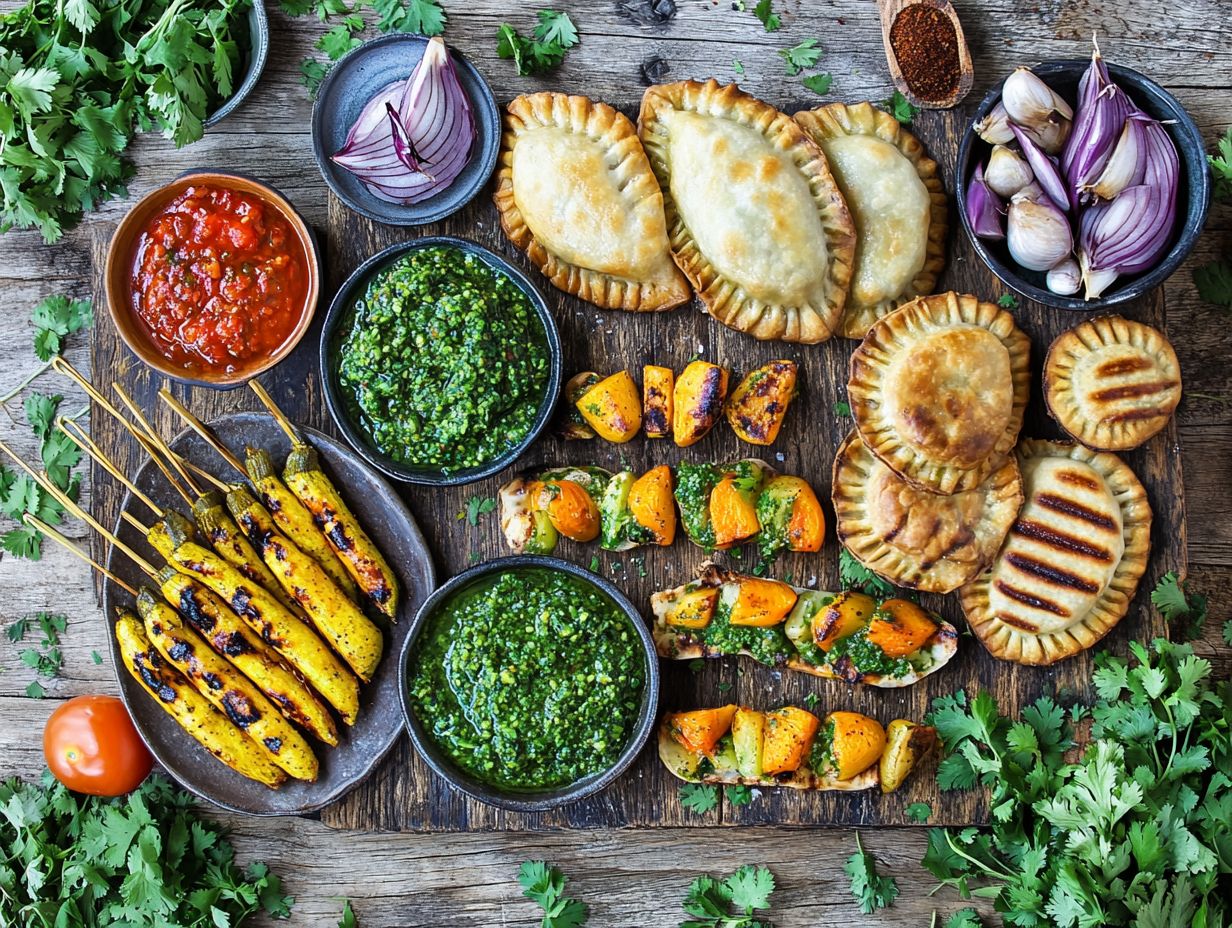
Ingredients:
- 1 can of white beans (frijoles blancos)
- 1 cup of dried corn (ma z seco)
- 1/2 cup of dried beans (frijoles secos)
- 1/4 cup of dried lentils (lentejas secas)
- 1 onion (cebolla)
- 1 carrot (zanahoria)
- 2-3 zucchinis (calabacines)
- 1-2 green peppers (pimientos verdes)
- 2-3 plantains, chopped (pl tanos verdes, cortados)
- Salt (sal) and spices (especias) to taste
Instructions (Improving Flavors):
- Soak the corn and beans overnight. After draining, combine them with the other beans, lentils, chickpeas, black beans, and chopped onion in a pot. Cover with water and bring to a boil for 1-2 hours.
- Add the chopped vegetables, plantains, salt, spices, and seasoning. Cook for an additional 30-40 minutes, occasionally adding water as necessary, until the mixture reaches a porridge-like consistency. Serve warm.
— This article presents plant-based versions of classic Argentinian dishes, such as Empanadas and Humitas,, such as milanesas and locro, highlighting how these adaptations can provide a more inclusive culinary experience by incorporating common ingredients like vegetables, tofu, and quinoa. compared to the limited vegetarian options typically available in Argentinian cuisine. The vegan milanesa replaces traditional meat with plant-based alternatives, such as tofu, and enhances flavor using soy sauce, mustard, and spices. Toppings like avocado, tomato, and mayonnaise can also be added for experimentation. Traditionally, milanesa is made with beef or chicken and is a staple of Argentine cuisine, characterized by its breaded patty served with various sauces and toppings. Furthermore, the article suggests incorporating vegetables, such as garlic and parsley, into the vegan locro and using a variety of beans and lentils to boost protein and texture. Toppings such as avocado or fresh herbs, which align with the flavors of Argentinian cuisine, can be added to both recipes. A detailed recipe for vegan milanesa and locro is included at the end of the article, along with a section on Mazmorra and a video demonstration for the vegan locro recipe. along with a video demonstration for the vegan locro recipe.
Vegan Argentinian Desserts and Yerba Mate
Vegan Argentinian desserts offer a delightful way to experience the sweet side of Argentinian cuisine. Traditional dishes like dulce de leche and panqueques are creatively reimagined to suit a vegan diet, making delightful dessert toppings. For instance, dulce de leche can be crafted using coconut milk, cashew cream, or olive oil, resulting in a delicious vegan alternative. Similarly, panqueques can be prepared using only flour and plant-based milk. This section highlights the sweet side of Argentinian cuisine and demonstrates how to enjoy these treats while adhering to a vegan lifestyle.
Recipes for Dulce de Leche and Panqueques (Pastry)
Vegan recipes for dulce de leche and panqueques offer a delightful way to experience Argentina’s traditional cuisine to indulge in traditional Argentinian sweets while adhering to a plant-based lifestyle. The vegan dulce de leche can be made using coconut milk and sugar, simmered to achieve a rich and creamy texture. Similarly, panqueques can be prepared with simple ingredients like flour and plant-based milk, resulting in a deliciously versatile treat. These recipes celebrate the flavors of Argentina and are perfect for dessert lovers seeking indulgent yet conscience-friendly options. By utilizing natural sweeteners, dairy alternatives, and red wine, anyone can enjoy these mouthwatering desserts without compromising their ethical beliefs.
Vegan Dulce De Leche (Coconut Milk Variation) with Chimichurri
Ingredients:
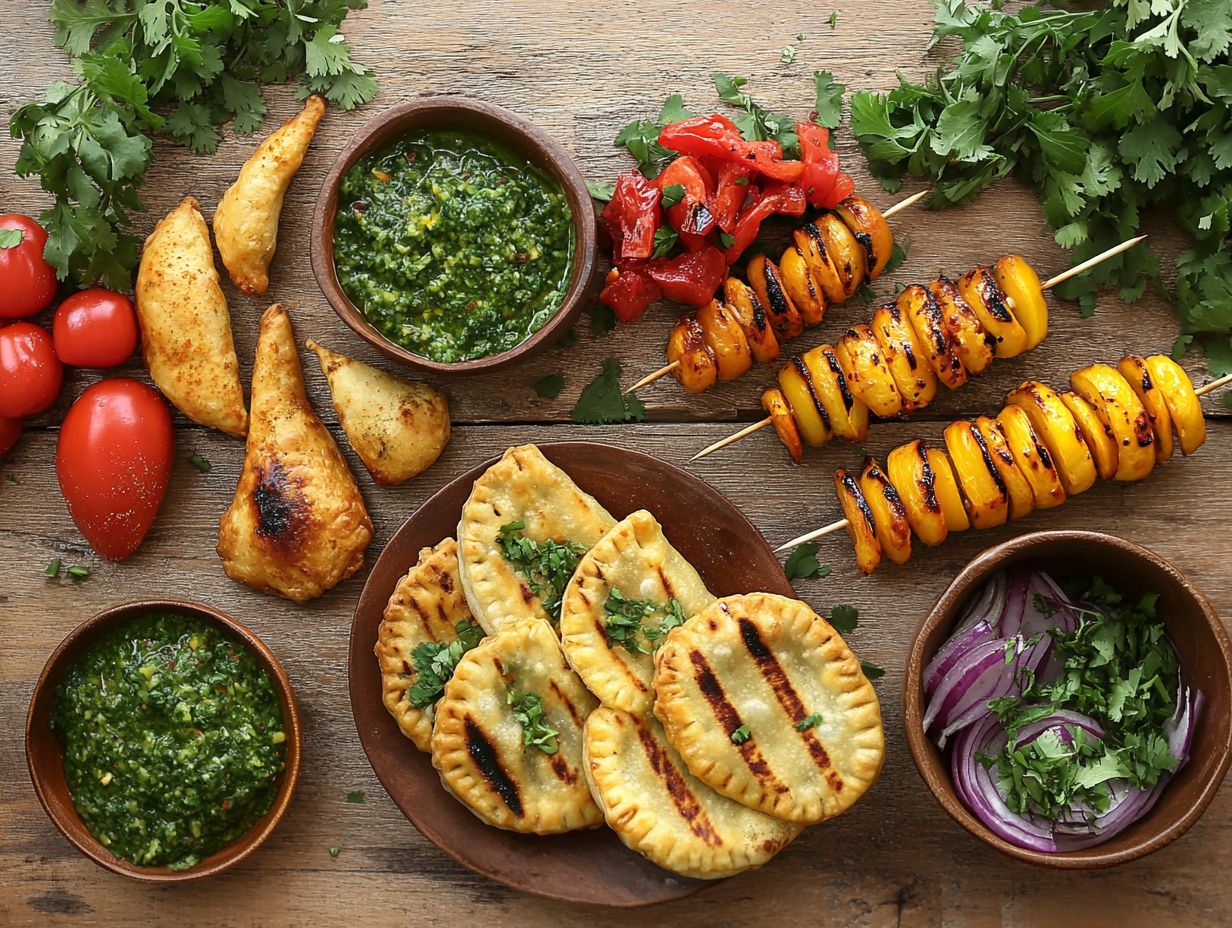
- 4 cups (950 ml) full-fat coconut milk (ensure it’s native coconut milk without additives)
- 1 – 2 cups (300 – 400 g) unrefined cane sugar, brown sugar, or coconut sugar
Directions:
- Combine the ingredients in a heavy pot over medium-high heat.
- Whisk until the sugar has completely dissolved.
- Lower the heat to medium-low and let the mixture simmer uncovered, stirring constantly, for about 1 to 3 hours, or until it has thickened.
- The final mixture should have a pudding-like consistency; it will thicken further as it cools.
- Store in airtight containers; it can be kept in the fridge for up to a week or in the freezer for up to a month.
—
Vegan Panqueques (Crepes)
Ingredients:
- 1 cups (375 ml) water
- 1 cup (125 g) all-purpose flour
- 1 tbsp (15 ml) vegetable oil
- tsp (2 g) salt
Directions:
- In a bowl, combine the oil, flour, and salt. Mix well.
- Add the water and stir until the batter is smooth and free of lumps. Adjust the thickness by adding less water for a thicker batter or more water for a thinner one.
- Allow the batter to rest for 15 to 30 minutes.
- Heat oil in a pan over medium-high heat. Pour cup of batter into the pan, tilting to coat the base evenly.
- Cook for about 2 minutes, or until the base is golden brown. Flip and cook the other side until done. Repeat with the remaining batter.
—
Vegan Caramel Sauce (for drizzling on panqueques)
Ingredients:
- 1 cup (250 ml) coconut cream
- 2 cups (100 g) shredded coconut
- 1 cup (250 ml) maple syrup
- cup (60 g) brown sugar, red wine
- Salt to taste
Directions:
- Blend all ingredients in a food processor until smooth.
- For a thicker sauce, add more shredded coconut. To dilute the coconut flavor, add more maple syrup.
Enjoy these vegan recipes for dulce de leche and panqueques, perfect for satisfying your sweet tooth while embracing a plant-based lifestyle!
